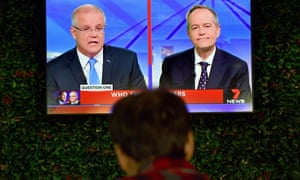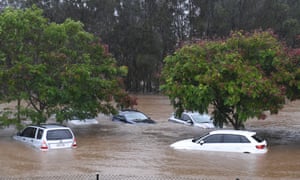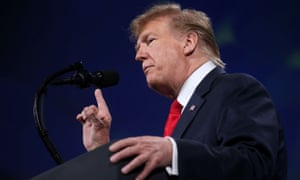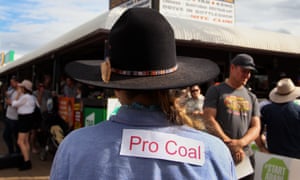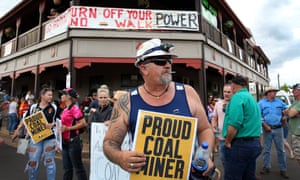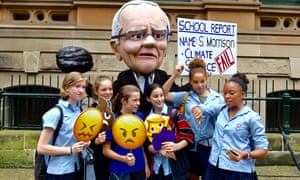Australian election 2019
Studio audience correctly calls debate for Shorten for laying out a vision, but the unusual format made for awkward moments
It seems a bit ludicrous, superfluous even, to pick a winner of the first televised debate of the 2019 campaign, because the over-engineered format mugged everything.
It was beyond terrible. Three hosts. Two party leaders, shown in split screen, never off camera. Scott Morrison and Bill Shorten didn’t know what to do with their faces when their opponent was speaking, so Morrison smirked and Shorten grinned.
The only thing more terrible than the “what the heck do I do with my face” dilemma was the very strange violin-type sound that denoted time’s up for the various segments – a strange scratching noise, like a wounded insect.
The experience would have been better in the room in Perth, but the three-or-so viewers tuning in live on Monday night on one of Seven’s multi-channels would have really struggled to focus on the content, given all the distractions.
But assuming people did manage to focus on the content despite the myriad barriers to doing that, the basic dynamic of the 2019 contest was there for all to see.
What you could see was this.
Morrison really has nothing to say beyond don’t vote for Shorten.
That is it.
Don’t vote for that (shifty) bloke. Over and over, in different formulations. It’s not time for a change. Don’t turn back now. You don’t know what Bill’s stuff costs. It’s scary. You’ll pay for it.
If you tuned in to Monday night’s debate hoping you might be given some idea what the Coalition will offer you in the event it wins the contest on 18 May – some glimmer of insight into why the government wants to remain in power, what it will do with power, why it deserves to remain in power after, well .. everything – Morrison had nothing for you, apart from the fact he’s not Bill Shorten.
What will Morrison do in his first 50 days in office if he wins?It was beyond terrible. Three hosts. Two party leaders, shown in split screen, never off camera. Scott Morrison and Bill Shorten didn’t know what to do with their faces when their opponent was speaking, so Morrison smirked and Shorten grinned.
The only thing more terrible than the “what the heck do I do with my face” dilemma was the very strange violin-type sound that denoted time’s up for the various segments – a strange scratching noise, like a wounded insect.
The experience would have been better in the room in Perth, but the three-or-so viewers tuning in live on Monday night on one of Seven’s multi-channels would have really struggled to focus on the content, given all the distractions.
But assuming people did manage to focus on the content despite the myriad barriers to doing that, the basic dynamic of the 2019 contest was there for all to see.
What you could see was this.
Morrison really has nothing to say beyond don’t vote for Shorten.
That is it.
Don’t vote for that (shifty) bloke. Over and over, in different formulations. It’s not time for a change. Don’t turn back now. You don’t know what Bill’s stuff costs. It’s scary. You’ll pay for it.
If you tuned in to Monday night’s debate hoping you might be given some idea what the Coalition will offer you in the event it wins the contest on 18 May – some glimmer of insight into why the government wants to remain in power, what it will do with power, why it deserves to remain in power after, well .. everything – Morrison had nothing for you, apart from the fact he’s not Bill Shorten.
What will he do for the next three years, apart from legislate the tax cuts, keep the boats stopped, and keep telling people not to vote Labor, because … Labor? I have no idea, honestly, and I watch politics for a living.
So election debate one underscored that simple but profound vacancy. It is so, so, thin, the whole, vote Liberal, we’re not those other bastards, pitch; a light breeze would blow it over – and there it was, on display, in the cluttered format on Monday night.
A whole lot of nothing.
The other main dynamic of Morrison’s campaign was also on display. He is trying to mask the vacancy of his offering with sharp attacking play, and the Liberal leader is relentless.
Morrison was a bit nervous at the start, but he settled in on his bar stool, and poked a stick in Shorten’s wheel spoke whenever an opportunity presented itself. He hovered, assiduous, solicitous, waiting for Shorten to fluff his answer, and picked up whenever there was anything loose, clambering on to his opponent’s deficiency.
Morrison is absolutely dogged with that objective. He’s trying to take down Shorten in a flurry of energy-sapping blows rather than going for a risky king hit that could also knock himself out of the ring.
One genuinely interesting component of Monday night’s debate was the exchanges on climate change. Shorten leaned in to the “we’ve got to take action” messaging – which he hasn’t for several days – which was his rebuttal to Morrison’s attack lines on Labor’s policy.
“We’re going to take on the government’s scare campaigns because if we don’t, we are selling out the future,” Shorten said, attempting to clamber out of the strangely aggressive nit-picking ditch the campaign has fallen into. “If we don’t take real action on climate change it will be a disaster for our economy.”
Morrison continued to tut-tut about international permits in the hope climate change will become the political weapon it was for Tony Abbott in 2013, except this Liberal leader can’t quite popularise the scare campaign. International permits are not tangible like $100 lamb roasts – and of course, those $100 roasts never eventuated.
When Shorten wasn’t grinning in his half of the split screen while Morrison lumbered on with his left-right combinations he was telling the voting audience Labor had a tangible agenda for them – not just a strategy to avoid an election loss.
He was selling a policy agenda. Ideas. A number of them.
The Labor leader was also telling his audience they had already made up their minds, a bit like a hypnotist, or Mick Dundee subduing a recalcitrant buffalo.
“There is a mood for change in Australia,” Shorten said, projecting tranquility, willing this be so.
The studio audience agreed. They gave the debate to Shorten.
On substance, this was the correct call. But we are only at the mid-point of the marathon. The gruelling finish is yet to come.
